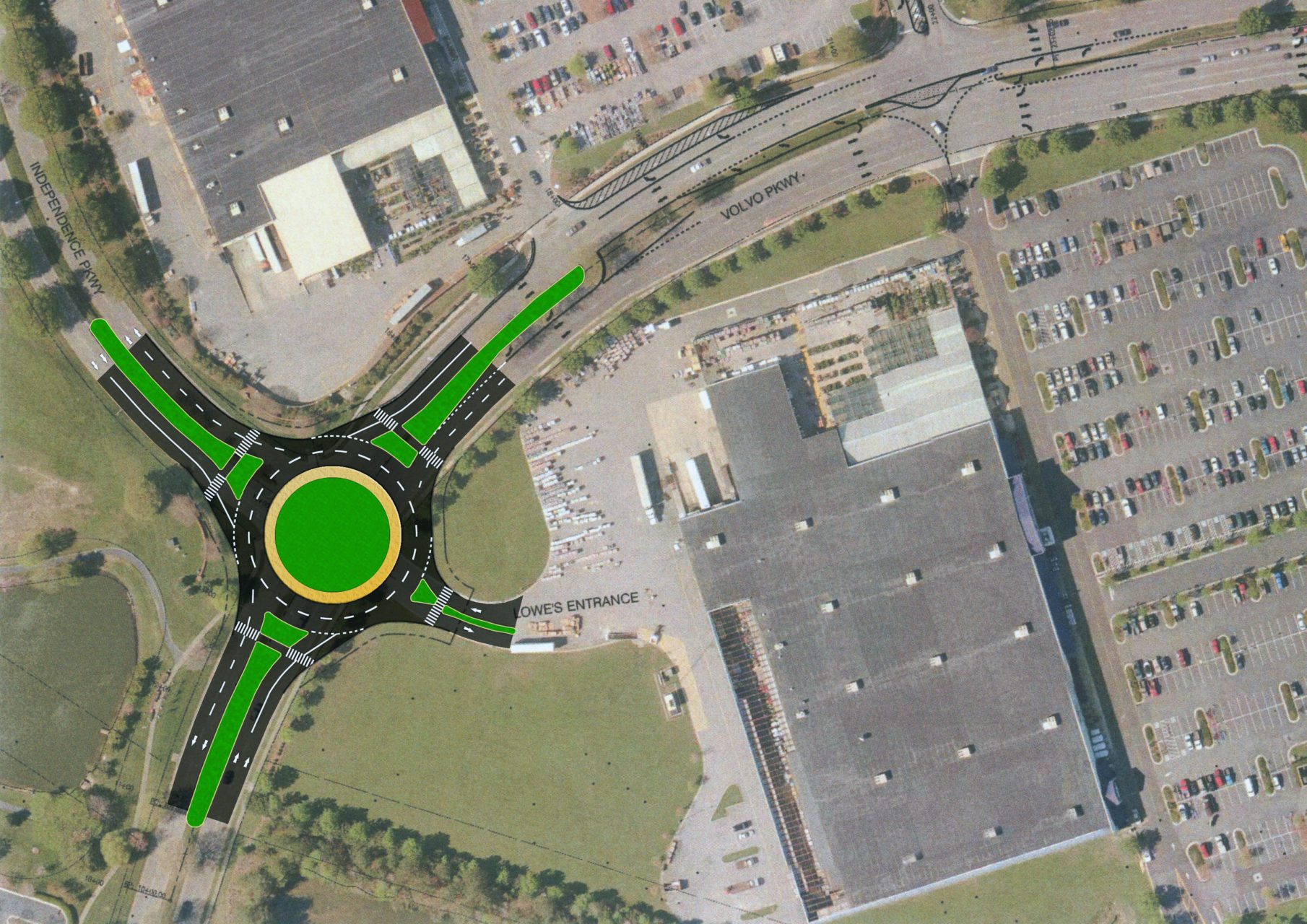In an effort to improve safety, Clark Nexsen’s Transportation – Roads team designed a roundabout and median improvements at intersections along Volvo Parkway in the City of Chesapeake, Virginia. Volvo Parkway is a four-lane divided roadway and had an existing signalized intersection at the intersection with Independence Parkway. At the beginning of the project, Clark Nexsen conducted a traffic analysis including traffic counts, origin/destination studies, and Sidra analysis to verify a roundabout would work effectively at this intersection. Based on the analysis, it was recommended that the existing signalized intersection of Volvo Parkway and Independence Parkway be replaced with a turbo roundabout designed to accommodate a high percentage of WB-67 trucks. The turbo roundabout has a combination of single and dual-lane approaches and circulating lanes which spiral outwards. This spiral design eliminates the weaving maneuvers within the roundabout, increasing safety. This was the City of Chesapeake’s first roundabout.
In addition to the roundabout, a high crash intersection was located just east of the intersection with Independence Parkway. The existing intersection of Volvo Parkway at Tintern Street and a commercial entrance was unsignalized with stop control on the minor streets and allowed full turning movements. To address the existing crash patterns, median modifications were designed to restrict left-turn movements from the minor approaches. An exclusive left-turn lane was designed into the existing median along Volvo Parkway to provide protection for left-turning vehicles.
The design challenges with this project included accommodating a large volume of pedestrian traffic within the roundabout and improving the existing drainage system. The entrance radii of the roundabout and the design of the splitter islands were closely examined with relation to the pedestrian crossings. Signage was also added per the MUTCD to warn motorists of the pedestrian crossings.

